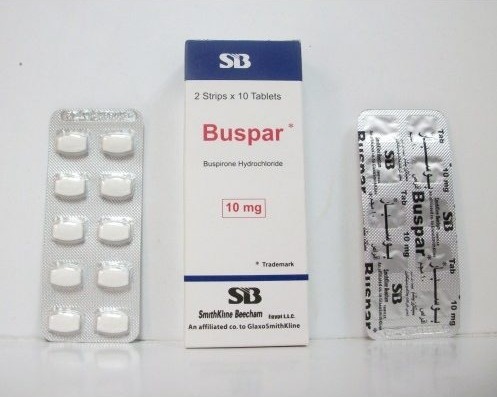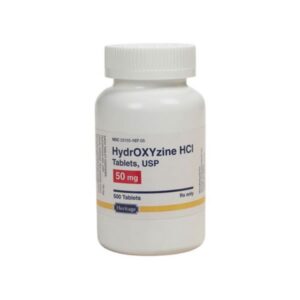Buspar, known generically as Buspirone, is a medication primarily prescribed for the treatment of anxiety disorders. As a non-benzodiazepine anxiolytic, Buspirone offers a distinct mechanism of action compared to traditional anti-anxiety medications, making it a valuable option for individuals seeking relief from anxiety symptoms without the risk of dependence or sedation. Buspirone 10 mg represents a common dosage strength used in the management of anxiety disorders, providing a balance between therapeutic efficacy and tolerability. This comprehensive guide aims to provide an in-depth exploration of Buspirone 10 mg, covering its mechanism of action, therapeutic uses, recommended dosage, potential side effects, precautions, and important considerations for safe and effective use.
Understanding Buspar (Buspirone) 10 mg: Buspirone belongs to a class of medications known as azapirones, which act as partial agonists at serotonin (5-HT1A) receptors and antagonists at dopamine (D2) receptors in the brain. Unlike benzodiazepines, which enhance the inhibitory effects of gamma-aminobutyric acid (GABA) neurotransmitter, Buspirone exerts its anxiolytic effects by modulating serotonin and dopamine activity, thereby reducing excessive neuronal firing and promoting a sense of calmness and relaxation. Buspirone 10 mg provides a moderate dosage strength suitable for managing anxiety symptoms while minimizing the risk of adverse effects.
Uses and Indications: Buspirone 10 mg is indicated for the treatment of generalized anxiety disorder (GAD), a common psychiatric condition characterized by excessive worry, tension, and nervousness that persists for an extended period. GAD affects individuals of all ages and can significantly impair daily functioning and quality of life if left untreated. Buspirone is also used off-label to manage symptoms of other anxiety disorders, such as panic disorder, social anxiety disorder, and obsessive-compulsive disorder (OCD), either as monotherapy or adjunctive therapy in combination with other medications or psychotherapy.
Efficacy and Benefits: Clinical studies have demonstrated the efficacy of Buspirone 10 mg in reducing anxiety symptoms and improving functional outcomes in individuals with generalized anxiety disorder (GAD). The moderate dosage strength offers a balance between therapeutic efficacy and tolerability, allowing for adequate symptom control while minimizing the risk of adverse effects commonly associated with higher doses or other anti-anxiety medications. Buspirone typically begins to take effect within 1 to 2 weeks after initiation of therapy, with optimal therapeutic benefits observed with continued use over time. By providing relief from debilitating symptoms, Buspirone enhances the quality of life for individuals affected by anxiety disorders.
Dosage and Administration: The recommended dosage of Buspirone 10 mg is determined based on individual response, tolerability, and severity of anxiety symptoms. It is typically administered orally in divided doses throughout the day to maintain therapeutic blood levels and provide sustained symptom control. The dosage may be titrated gradually based on clinical response and tolerance, with regular monitoring by a healthcare professional to optimize therapeutic outcomes and minimize the risk of adverse effects. It is important to follow the prescribed dosage and administration instructions provided by the healthcare provider to achieve optimal treatment outcomes while reducing the risk of medication misuse or overuse.
Side Effects and Precautions: While Buspirone is generally well-tolerated, it can cause certain side effects, especially at higher dosage strengths such as Buspirone 10 mg. Common side effects include dizziness, drowsiness, headache, nausea, and lightheadedness. These effects are usually mild to moderate in intensity and transient, resolving spontaneously with continued use or dose adjustment. However, more serious adverse reactions such as serotonin syndrome, allergic reactions, and cardiovascular events are rare but require immediate medical attention. It is important to use Buspirone with caution in individuals with certain pre-existing medical conditions such as liver or kidney impairment, bipolar disorder, and history of substance abuse. Additionally, Buspirone may interact with certain medications, including monoamine oxidase inhibitors (MAOIs), selective serotonin reuptake inhibitors (SSRIs), and tricyclic antidepressants (TCAs), leading to potentially serious drug interactions and adverse effects.
Conclusion: Buspirone 10 mg is a valuable medication for the treatment of generalized anxiety disorder (GAD) and other anxiety disorders, providing significant relief from symptoms of excessive worry, tension, and nervousness. With its distinct mechanism of action and moderate dosage strength, Buspirone offers effective symptom control while minimizing the risk of adverse effects commonly associated with traditional anti-anxiety medications. However, it is important to use Buspirone responsibly, under the guidance of a healthcare professional, and to be aware of potential side effects, precautions, and drug interactions. By understanding the therapeutic uses, dosage recommendations, and safety considerations associated with Buspirone 10 mg, individuals with anxiety disorders can make informed decisions regarding their treatment options and achieve better management of their symptoms.





Reviews
There are no reviews yet.